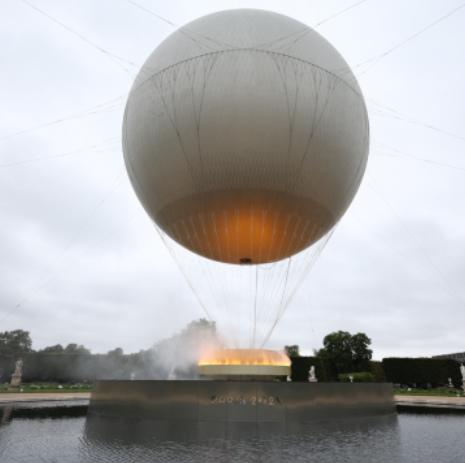At 11.24pm on Friday, 26th July, the Paris 2024 Olympic Games commenced, highlighted by the lighting of the Olympic Cauldron. And, for the first time in Olympic history, the flame shone without fuel – instead it was powered entirely by renewable electricity produced in France.
This article originally appeared in the July’24 magazine issue of Electronic Specifier Design – see ES’s Magazine Archives for more featured publications.
This event was brought to life by French designer Mathieu Lehanneur, who created a display that combined innovation and tradition.
The honour of lighting the cauldron was given to two iconic French athletes, Marie-José Pérec and Teddy Riner. After a final Group Relay featuring legends of French and global sports, Pérec and Riner crossed the great water basin of the Jardin des Tuileries to ignite a cauldron unlike any seen before in Olympic history.
Mathieu Lehanneur’s creation took the form of a giant ring of fire surmounted by a balloon. For the first time in Olympic history, the flame shone without fuel, thanks to EDF. The flame was a combination of a cloud of mist and beams of light, powered entirely by renewable electricity. This innovative approach ensured the flame was both visible and warm, a technical feat that involved 40 LED spotlights and 200 high-pressure misting nozzles. EDF’s engineering ensured the flow of electricity and water 60 metres above the ground when the cauldron was in flight.
The partnership agreement with the Paris 2024 Olympic and Paralympic Games revitalised efforts begun by EDF researchers and designers in 2010 to create an alternative flame that does not rely on fossil fuels, a project initially aimed at the London 2012 Games cauldron. EDF, convinced of electricity’s potential as a viable and inspiring alternative to fossil fuels, developed a proposal for a 100% electric flame for the Paris 2024 Cauldron, reflecting its commitment to a CO2-neutral future.
“This absolutely unique Cauldron represents all the spirit I wanted to give to the Olympic and Paralympic objects. Light, magical, and unifying, it will be a beacon in the night and a sun within reach during the day. The fire that burns in it will be made of light and water, like a cool oasis in the heart of summer. I created the Torch, the Relay cauldron and the Olympic Cauldron as three chapters in the same story. The Cauldron is the epilogue and the ultimate symbol of that story,” said Mathieu Lehanneur, Designer of the Cauldron for the Olympic Games Paris 2024.
“Thanks to an innovation by EDF, the Paris 2024 Cauldron will shine for the first time with a 100% electric flame. This ‘electric revolution’ was made possible thanks to the monumental work carried out by our teams and designer Mathieu Lehanneur. Their creativity and innovative strength have made it possible to design a flame without fossil fuel combustion, a flame made of water and light. The future is electric, and EDF’s teams are proud to have made history by helping to make Paris 2024 a more sustainable and responsible Games,” said Luc Rémont, Chairman and CEO of EDF.
Original article source:
FAQ
Q: What is the significance of the Olympic Flame shining without fuel?
A: This development represents a significant technological advancement. Traditionally, the Olympic Flame has relied on fuel to sustain its burn. The new technology likely reflects advances in energy and material sciences, allowing for a more sustainable and possibly safer way to keep the flame alight.
Q: How does this fuel-free flame work?
A: The exact technology can vary, but it might involve the use of electrical methods, such as induction or plasma technology, which can generate light and heat without the need for traditional fuels like gas or oil.
Q: When and where was this historic first implemented?
A: This breakthrough might have been implemented in the most recent Olympic Games or an associated event, showcasing the evolution of the Olympic traditions.
Q: What are the benefits of a fuel-free Olympic Flame?
A: Benefits include reduced environmental impact, elimination of the need for fuel transportation and storage, and potentially enhanced safety and reliability.
Q: Are there any drawbacks or challenges with this technology?
A: Challenges might include the initial cost of implementing the technology, ensuring its reliability under various conditions, and the need for specialized infrastructure to support it.
Q: Will this new technology be used in future Olympics?
A: If successful, it is likely that the technology will be adopted in future Olympic Games, contributing to the modernization and sustainability of the event.
